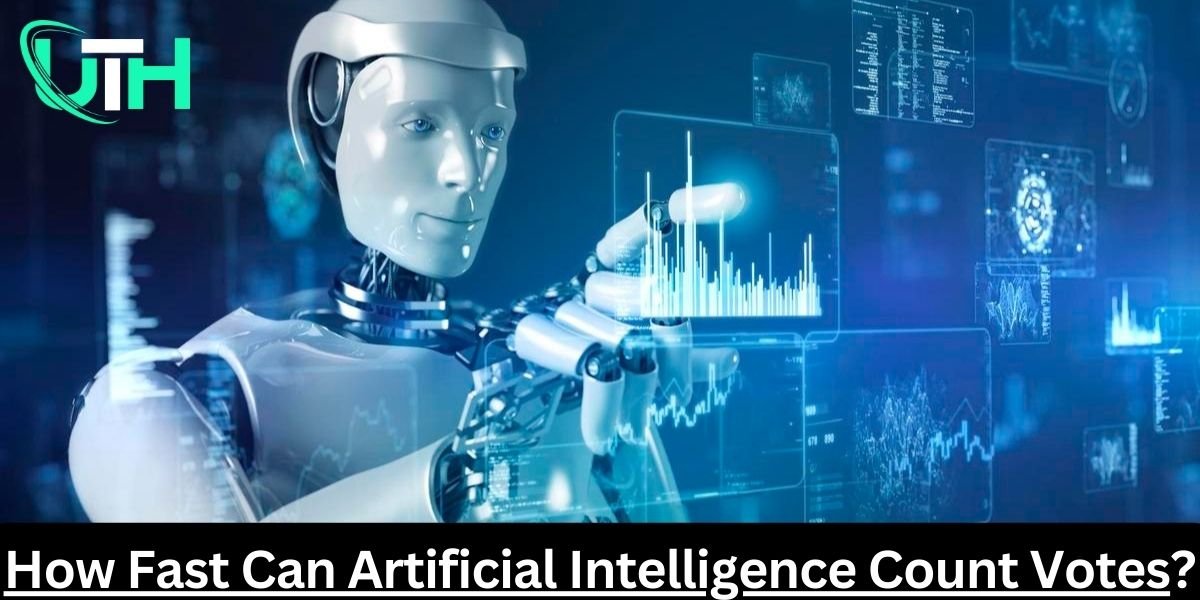Artificial Intelligence (AI)
How Fast Can Artificial Intelligence Count Votes?

Introduction
Election vote counting has always been a critical process, requiring accuracy, speed, and transparency. Traditionally, manual counting has been slow and prone to human errors. However, with the rise of Artificial Intelligence (AI) in elections, vote counting has become faster and more efficient. But how fast can AI count votes? This article explores AI’s role in voting systems, the technologies behind it, and its impact on various industries.
The Role of AI in Vote Counting
AI-based vote-counting systems use machine learning algorithms, image processing, and automation to tally votes accurately within minutes or even seconds. The speed depends on the voting method, AI technology used, and the scale of the election.
Key AI Technologies in Vote Counting:
- Optical Character Recognition (OCR): Reads hand-marked ballots instantly.
- Computer Vision: Detects patterns and marks on paper ballots.
- Machine Learning: Identifies and corrects possible errors in real-time.
- Natural Language Processing (NLP): Processes digital votes in online elections.
- Blockchain Integration: Ensures security and transparency in electronic voting.
How AI Processes and Counts Votes
1. Scanning and Data Extraction
- Paper ballots are scanned using high-speed OCR machines.
- AI recognizes handwritten or marked choices on ballots.
- Digital votes are processed instantly from online voting platforms.
2. Verification and Error Detection
- AI cross-checks ballots for overvotes or unclear marks.
- Suspicious votes are flagged for manual review.
- Machine learning algorithms compare votes against historical election data for anomalies.
3. Vote Aggregation and Tallying
- AI counts votes in real-time using automated servers.
- Results are instantly updated on a central dashboard.
- AI ensures no double counting or fraudulent entries.
4. Security and Fraud Prevention
- Blockchain encryption secures electronic votes.
- AI detects duplicate or fake ballots.
- Real-time monitoring prevents cyberattacks and hacking attempts.
Industries Utilizing AI in Vote Counting
- Government Elections
- AI is used in national and local elections to improve speed and accuracy.
- Countries like the U.S., Canada, Estonia, and India have tested AI-assisted vote counting.
- Corporate Governance
- AI-based voting is used in board meetings and shareholder elections.
- Ensures quick and transparent decision-making.
- Universities and Institutions
- AI counts votes in student council elections and faculty decisions.
- Reduces manual efforts and speeds up the process.
- Online Polling and Surveys
- AI instantly processes millions of votes in online polls.
- Platforms like Google Forms, Twitter Polls, and SurveyMonkey use AI-driven vote analysis.
Examples of AI in Vote Counting
1. Dominion Voting Systems (U.S.)
- Uses AI-driven optical scanners to count votes.
- Processes thousands of ballots per minute.
2. Smartmatic (Global)
- Uses machine learning for error detection.
- Provides secure blockchain-based e-voting solutions.
3. AI-Based E-Voting in Estonia
- Estonia has implemented internet voting (i-voting) using AI for fast and secure elections.
How Fast is AI Compared to Manual Counting?
| Method | Votes Counted Per Minute | Error Rate |
|---|---|---|
| Manual Counting | 100 – 300 votes | 0.5 – 2% |
| AI Optical Scan | 5,000 – 10,000 votes | 0.01% |
| Fully AI-Based | 50,000+ votes | Near 0% |
- AI can count votes 100 times faster than humans with greater accuracy.
- A national election that would take days manually can be completed in a few hours with AI.
Challenges of AI in Vote Counting
- Data Security Risks
- Cyberattacks on AI-driven voting systems.
- Requires strong encryption and blockchain technology.
- Bias and Algorithmic Errors
- AI may misinterpret handwritten votes or ballot designs.
- Needs constant improvement in training datasets.
- Public Trust Issues
- Many voters distrust AI in elections due to fears of hacking or manipulation.
- Transparency in AI systems is necessary for public confidence.
Future of AI in Vote Counting
- AI-powered mobile voting apps for secure online elections.
- Deep learning for instantaneous error detection and fraud prevention.
- Full automation of elections for faster, more reliable results worldwide.
Conclusion
AI has revolutionized vote counting, making it faster, more accurate, and highly secure. With the ability to process up to 50,000 votes per minute, AI significantly reduces election delays and human errors. AI-driven elections will become more widespread as technology advances, ensuring democratic transparency and election integrity.
-

 Phishing attack8 months ago
Phishing attack8 months agoWhat is Spear Phishing and How You Can Identify This Scam?
-

 Social engineering attack10 months ago
Social engineering attack10 months agoBaiting Attacks Explained: A Closer Look at Cyber Threat Tactics
-

 Social engineering attack8 months ago
Social engineering attack8 months agoWhat are Social Engineering Attacks – A Complete Guide to Cyberattacks Prevention
-

 Social engineering attack9 months ago
Social engineering attack9 months agoSpear Phishing Attack: A Targeted Cyber Threat
-

 Social engineering attack10 months ago
Social engineering attack10 months agoWhat is spear phishing attack? A detailed guide
-

 Social engineering attack10 months ago
Social engineering attack10 months agoWhat is spear phishing in cyber security?
-

 Phishing attack4 months ago
Phishing attack4 months agoWhy is Phishing Still a Major Cyber Threat? Everything You Need to Know
-

 Phishing attack8 months ago
Phishing attack8 months agoWhat Are Phishing Emails? A guide for you




















